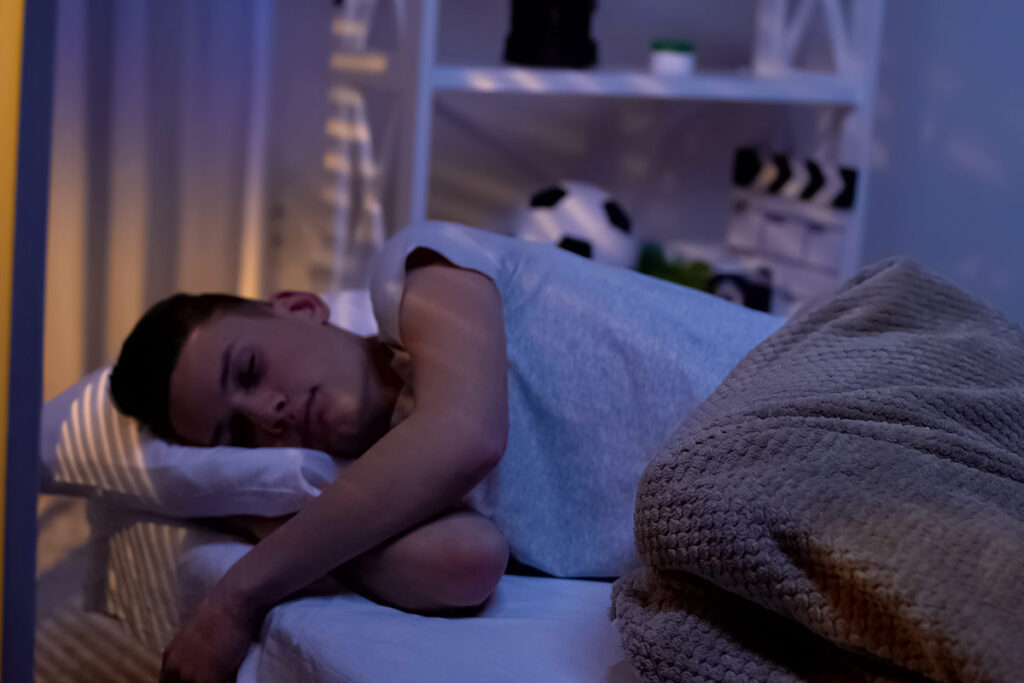Sleep testing is an essential diagnostic tool for identifying and treating sleep disorders. If you’re in Adelaide and looking to navigate the process of sleep testing, this article provides valuable tips and resources to help you get started. From understanding the importance of sleep testing to preparing for a sleep test and exploring different testing facilities, we’ve got you covered.
Understanding Sleep Testing
Sleep testing, also known as polysomnography, is a comprehensive assessment that evaluates a person’s sleep patterns, brain activity, heart rate, and breathing while they sleep. It helps medical professionals diagnose sleep disorders such as sleep apnea, narcolepsy, insomnia, and restless legs syndrome. By navigating sleep test Adelaide with the tips and resources provided above, you can gain insight into your sleep disorders and take proactive steps towards improving your sleep quality and overall well-being. Remember, a good night’s sleep is crucial for a healthy and vibrant life!
The Importance of Sleep Testing
Sleep disorders can have a significant impact on your overall health and quality of life. They can lead to daytime fatigue, difficulty concentrating, increased risk of accidents, and various long-term health problems. Sleep testing is crucial for identifying the root cause of your sleep issues and developing an effective treatment plan.
Common Sleep Disorders
There are several common sleep disorders that can be diagnosed through sleep testing. These include:
- Sleep apnea: a condition characterized by pauses in breathing during sleep.
- Narcolepsy: a neurological disorder that causes excessive daytime sleepiness and sudden episodes of sleep.
- Insomnia: a sleep disorder characterized by difficulty falling asleep or staying asleep.
- Restless legs syndrome: a condition that causes an irresistible urge to move the legs, usually accompanied by uncomfortable sensations.

How Sleep Testing Works
During a sleep test, you will spend a night at a sleep clinic or use a home sleep testing device. Electrodes will be attached to your scalp, face, chest, and legs to monitor brain activity, eye movements, muscle activity, heart rate, and breathing patterns. The collected data will be analyzed by sleep specialists to diagnose any underlying sleep disorders.
Let’s delve deeper into the process of sleep testing. When you arrive at the sleep clinic, you will be greeted by a friendly staff member who will guide you through the entire procedure. They will explain the steps involved and answer any questions or concerns you may have, ensuring that you feel comfortable and at ease.
Once you are ready to begin, a sleep technologist will attach the electrodes to the designated areas of your body. These electrodes are painless and non-invasive, designed to capture the necessary data without causing any discomfort. The technologist will ensure that the electrodes are securely in place, allowing for accurate monitoring throughout the night. Find more about electrodes at https://www.brown.edu/Departments/Engineering/Courses/En123/Lectures/electrode08.htm
After the electrodes are attached, you will be given some time to relax and prepare for sleep. The sleep clinic provides a calm and soothing environment, designed to promote a restful night’s sleep. The room is equipped with a comfortable bed, cozy bedding, and dim lighting to create a peaceful atmosphere conducive to sleep.
Throughout the night, the sleep technologist will monitor your sleep patterns and collect data from the electrodes. They will be stationed in a separate control room, observing your sleep stages, breathing patterns, and any abnormal activity that may indicate a sleep disorder. Their expertise allows them to interpret the data accurately and provide valuable insights for diagnosis and treatment.
Once the sleep test is complete, the collected data will be analyzed by sleep specialists, who will interpret the results and provide a comprehensive report. This report will outline any sleep disorders that were detected, as well as recommendations for treatment. The sleep specialists will work closely with you to develop a personalized treatment plan that addresses your specific needs and improves your sleep quality.
Remember, sleep testing is a vital tool in diagnosing and treating sleep disorders. It allows medical professionals to gain a deeper understanding of your sleep patterns and identify any underlying issues that may be affecting your rest. By undergoing sleep testing, you are taking an important step towards improving your overall health and well-being.
Preparing for a Sleep Test
Before your sleep test, there are a few steps you can take to ensure accurate results:
Having a sleep test can provide valuable insights into your sleep patterns and help diagnose any potential sleep disorders. It is essential to prepare adequately for the test to ensure the results are as accurate as possible.
Steps to Take Before Your Test
1. Follow your regular sleep schedule in the days leading up to the test. Disrupting your sleep routine can affect the results of the test, so try to maintain your usual bedtime and wake-up times.
2. Avoid consuming caffeine, nicotine, and alcohol close to bedtime. These substances can interfere with your ability to fall asleep and stay asleep, which may impact the data collected during the test.
3. Inform your healthcare provider about any medications you are taking. Certain medications can affect your sleep patterns, so it’s essential to provide a comprehensive list to ensure accurate interpretation of the results.
4. If you wear makeup, remove it before the test to allow the electrodes to be properly attached. Clean, makeup-free skin ensures optimal contact for the sensors used during the sleep test.
It’s also helpful to engage in relaxing activities before bedtime, such as reading a book or taking a warm bath, to promote better sleep quality during the test.
What to Bring to Your Sleep Test
1. Comfortable sleepwear and toiletries for the morning. Wearing comfortable clothing can help you relax and feel more at ease during the test, leading to more natural sleep patterns.
2. Any medications you need to take before bedtime or in the morning. It’s crucial to have your medications on hand to maintain your regular routine and ensure your health needs are met during the test.
3. Your own pillow or blanket if it helps you sleep better. Having familiar bedding can create a more comfortable sleep environment, potentially leading to more restful and representative sleep patterns during the test.
Additionally, bringing a book or other relaxing materials can help you unwind before the test and promote a sense of calm that may aid in falling asleep more naturally. To read more about relaxing materials click here.
Sleep Testing Facilities in Adelaide
When choosing a sleep clinic in Adelaide, it’s essential to consider factors such as reputation, accreditation, expertise, and convenience. Here are some tips to help you make an informed decision:
Choosing the Right Sleep Clinic
1. Research different sleep clinics in Adelaide and read reviews from previous patients.
2. Look for clinics that are accredited by reputable organizations, such as the Australasian Sleep Association.
3. Consider the clinic’s expertise in diagnosing and treating your specific sleep disorder.
4. Don’t hesitate to schedule a consultation or visit the clinic in person to get a feel for the facilities and staff.
What to Expect at a Sleep Clinic
During your visit to a sleep clinic, you will be greeted by a team of sleep specialists who will guide you through the process. They will explain the procedure, answer any questions you may have, and ensure your comfort during the test. The sleep clinic will provide a comfortable room with a bed and monitoring equipment.
5. Before the sleep test begins, the staff will attach sensors to various parts of your body to monitor brain waves, heart rate, breathing patterns, and other vital signs throughout the night.
6. The monitoring equipment used in sleep clinics is state-of-the-art, allowing for precise data collection and analysis to aid in the accurate diagnosis of sleep disorders.
Home Sleep Testing Options
If visiting a sleep clinic is not feasible for you, home sleep testing can be a convenient alternative. Here are some benefits of home sleep testing:
Benefits of Home Sleep Testing
- Convenience: You can undergo the sleep test in the comfort of your own home.
- Cost-Effective: Home sleep testing is often more affordable compared to in-clinic testing.
- Flexibility: You can schedule the test at a time that suits your routine.
Home sleep testing offers a unique opportunity for individuals to monitor their sleep patterns and potentially identify any underlying sleep disorders without the need to travel to a sleep clinic. The convenience of conducting the test in a familiar environment can lead to more accurate results as it eliminates the potential stress or discomfort that some individuals may experience in a clinical setting.
Moreover, the cost-effectiveness of home sleep testing makes it a viable option for those looking to assess their sleep quality without incurring substantial expenses. This affordability factor can encourage more individuals to prioritize their sleep health and seek necessary interventions if any issues are detected.

How to Set Up a Home Sleep Test
Your healthcare provider will provide you with a portable sleep testing device and instruct you on how to set it up. The device typically includes a small monitor attached to your finger, a nasal cannula to measure airflow, and a chest belt to monitor breathing patterns. Follow the provided instructions carefully to ensure accurate results.
Setting up a home sleep test is a straightforward process that involves placing the monitoring devices as per the guidelines provided by your healthcare provider. It is essential to create a sleep-friendly environment in your home to mimic your typical sleeping conditions and ensure that the data collected during the test is representative of your usual sleep patterns.
Interpreting Your Sleep Test Results
After your sleep test, you will receive a report detailing the findings. Understanding your sleep data is essential for collaborating effectively with your healthcare provider to develop a treatment plan. Here are some key points to consider:
Understanding Your Sleep Data
Your sleep data will include information such as the number of apneas (paused breathing), oxygen levels throughout the night, duration of each sleep stage, and any abnormal sleep patterns. Your healthcare provider will interpret these results to diagnose your sleep disorder and recommend appropriate treatment options.
It’s important to note that the interpretation of sleep test results requires specialized knowledge and expertise. Healthcare providers analyze various parameters to assess the quality of your sleep and identify any underlying issues that may be affecting your rest. By delving into the intricacies of your sleep data, they can pinpoint specific areas of concern and tailor interventions to address them effectively.
Next Steps After Receiving Your Results
Once you receive your sleep test results, schedule a follow-up appointment with your healthcare provider to discuss the findings. They will explain the diagnosis, answer your questions, and develop a comprehensive treatment plan tailored to your specific needs.
Furthermore, the collaborative nature of this process is key to ensuring that you receive personalized care. Your active participation in understanding the results and contributing insights about your sleep patterns can significantly enhance the effectiveness of the treatment plan. This partnership between you and your healthcare provider fosters a holistic approach to managing your sleep disorder and promotes better long-term outcomes.
More read: The Role of Medicare in Covering Sleep Apnea Test Costs

